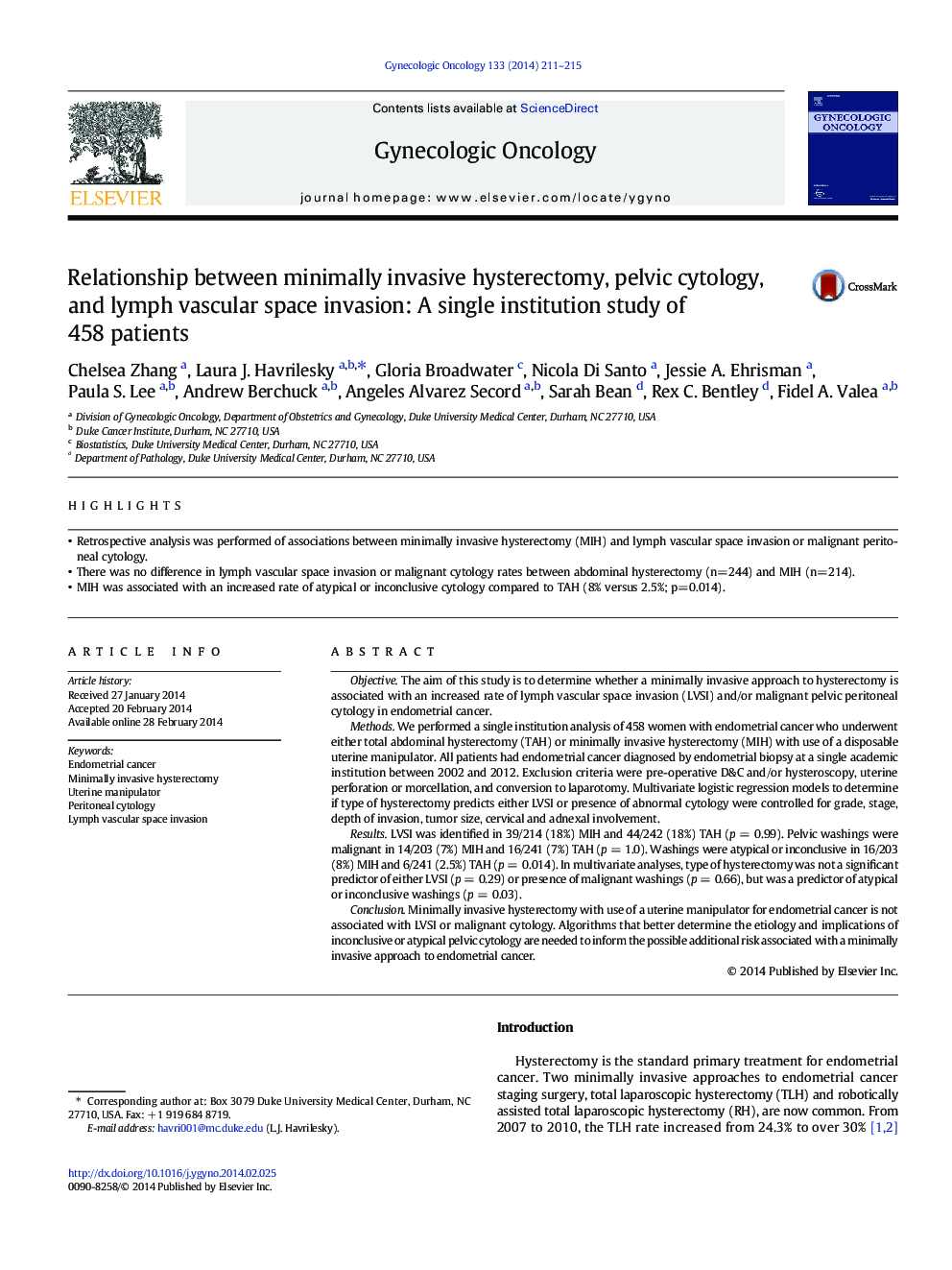| Article ID | Journal | Published Year | Pages | File Type |
|---|---|---|---|---|
| 6182712 | Gynecologic Oncology | 2014 | 5 Pages |
â¢Retrospective analysis was performed of associations between minimally invasive hysterectomy (MIH) and lymph vascular space invasion or malignant peritoneal cytology.â¢There was no difference in lymph vascular space invasion or malignant cytology rates between abdominal hysterectomy (n=244) and MIH (n=214).â¢MIH was associated with an increased rate of atypical or inconclusive cytology compared to TAH (8% versus 2.5%; p=0.014).
ObjectiveThe aim of this study is to determine whether a minimally invasive approach to hysterectomy is associated with an increased rate of lymph vascular space invasion (LVSI) and/or malignant pelvic peritoneal cytology in endometrial cancer.MethodsWe performed a single institution analysis of 458 women with endometrial cancer who underwent either total abdominal hysterectomy (TAH) or minimally invasive hysterectomy (MIH) with use of a disposable uterine manipulator. All patients had endometrial cancer diagnosed by endometrial biopsy at a single academic institution between 2002 and 2012. Exclusion criteria were pre-operative D&C and/or hysteroscopy, uterine perforation or morcellation, and conversion to laparotomy. Multivariate logistic regression models to determine if type of hysterectomy predicts either LVSI or presence of abnormal cytology were controlled for grade, stage, depth of invasion, tumor size, cervical and adnexal involvement.ResultsLVSI was identified in 39/214 (18%) MIH and 44/242 (18%) TAH (p = 0.99). Pelvic washings were malignant in 14/203 (7%) MIH and 16/241 (7%) TAH (p = 1.0). Washings were atypical or inconclusive in 16/203 (8%) MIH and 6/241 (2.5%) TAH (p = 0.014). In multivariate analyses, type of hysterectomy was not a significant predictor of either LVSI (p = 0.29) or presence of malignant washings (p = 0.66), but was a predictor of atypical or inconclusive washings (p = 0.03).ConclusionMinimally invasive hysterectomy with use of a uterine manipulator for endometrial cancer is not associated with LVSI or malignant cytology. Algorithms that better determine the etiology and implications of inconclusive or atypical pelvic cytology are needed to inform the possible additional risk associated with a minimally invasive approach to endometrial cancer.
